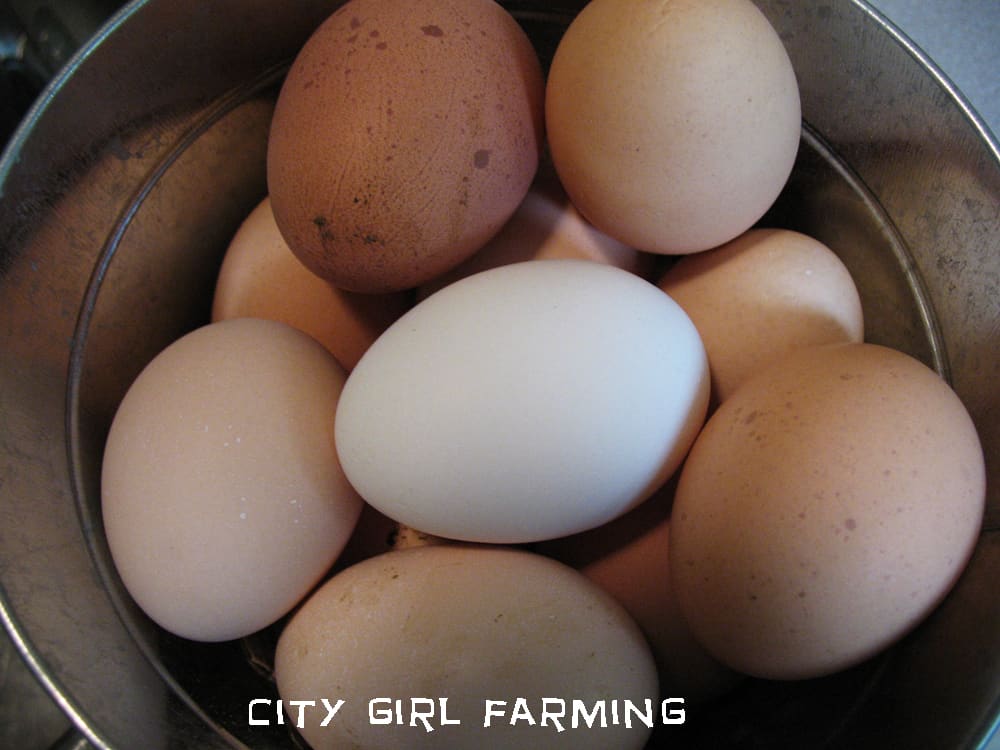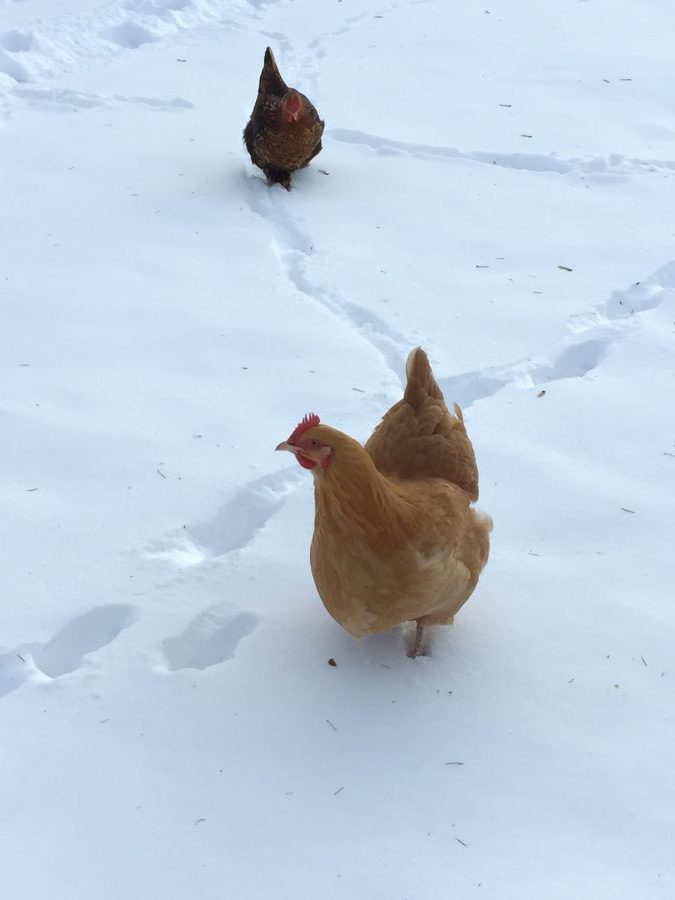
Hens need a good 14-16 hours worth of light for optimal egg production. So when winter sets in, with its shorter days, it signals your chickens to slow down and finally take a break.
A break in egg production is a great thing for those backyard hens, but not such a good thing for the owners wanting fresh eggs. Because of this, a debate arises as to whether or not to add supplemental lighting to the coop to artificially increase daylight hours and keep egg production going through the winter.
One side of the debate says the natural, nice and humane thing to do is to allow the birds a winter break. This is how their internal clocks work. Messing with nature for our own benefit is wrong.
The other side of the debate says raising hens for eggs gets much more expensive when you have to feed them through the winter without receiving any (or at least a lot fewer) eggs. It’s not cost effective to give the chickens the winter off.
There are also some that take the middle road. They give their girls a break through fall and molting and turn the lights on in January to up their egg production.
Where you land is largely a personal preference. But if you decide to add light to your coop, here are some guidelines to follow:
1. You don’t nee d much light. A 40-watt bulb hanging from the ceiling should do it. You need to be consistent with how you use the light. The best thing to do is get a timer to turn the lights on and off at the same time every day.
d much light. A 40-watt bulb hanging from the ceiling should do it. You need to be consistent with how you use the light. The best thing to do is get a timer to turn the lights on and off at the same time every day.
2. Don’t start using artificial lighting until after your chickens are done molting. The shortening of days signals your hens to start their molt and if they don’t have waning daylight to clue them in, they might start molting in the dead of winter when they need their feathers most.
3. It’s important to set the light to come in the morning, to start the daylight hours earlier. Don’t use it to extend the evening hours once it gets dark. Chickens can’t see in the dark and will easily get disoriented if the light is on one moment and off the next. They need time to settle in, find their place and prepare for their nighttime rest. And don’t keep it on all night. They need some darkness to get adequate rest.
4. You need 14-16 hours per day for optimal egg production, but that doesn’t mean your artificial light needs to be on that long, it just needs to extend the daylight hours for at least 14-16 hours.
I’m not against lighting in the coop, but I fall on the side of giving my hens a rest in the winter. I see it like allowing myself to take a much needed break after a busy summer and fall tending and harvesting the garden. My hens work hard laying an abundance of eggs all spring, summer and most of the fall. I don’t mind watching the production dwindle in the winter. Of course, my life doesn’t depend on those eggs, and my hens are like pets to me, so the decision is easier to make.
If you’re like lots of other folks out there, though, you’ll be for keeping light in the coop. And that’s great. Just make sure you do it safely and with common sense and it will all work out great!
